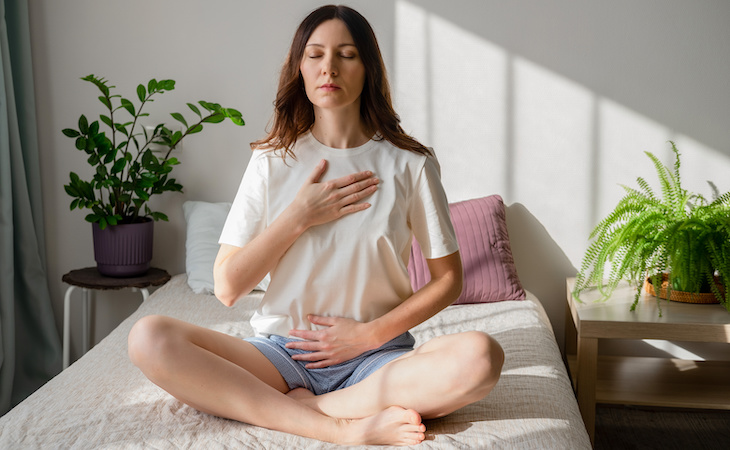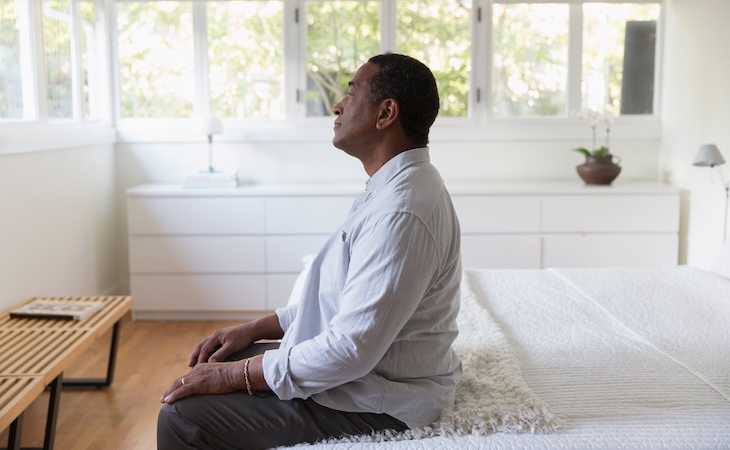TikTok is so useful if you want to learn a new hairstyle, makeup trick, or even ideas on how to refresh your home. But lately, I’ve been scanning it to see if I can spy any sleep hacks that I haven’t tried yet. I’m not talking about anything too wild or out there that could harm my health (did you know mouth taping can be dangerous?); I’m just looking to add a few relaxation tips to my nighttime routine.
So, I tried three TikTok trends that actually have real science behind why they work. If the typical sleep hacks don’t do anything for you, then this is definitely a list worth trying out. Just make sure to consult your physician before beginning a new supplement or sleep treatment.
TikTok trends that actually work for better sleep
Swap melatonin for magnesium
IDK about you, but whenever I take melatonin I have the absolute worst nightmares ever. I’m talking horror-movie-level chases through the woods with no escape out-type of nightmares. I’ll spare you the details. When I saw TikTok user @drcharlesmd1, who’s known as Dr. Charles on his TikTok videos, raise an alternative option—magnesium—I was excited.
Magnesium supplements have shown promise in studies to help “improve subjective measures of insomnia such as ISI [Insomnia Severity Index] score, sleep efficiency, sleep time and sleep onset latency, early morning awakening,” and more.
When I can’t sleep, I sometimes reach for ibuprofen to help relax my strained muscles, but I liked having an alternative to that as well. I tried taking 250 mg of magnesium about 30 minutes before bed to help relax me instead. I actually found it to work, with no crazy dreams added!
This is likely because magnesium helps relax the central nervous system, which can help lower the heart rate for sleep. Just make sure you don’t take too much of it because large amounts of it are generally used to help relieve constipation.
Press a button
OK, it’s not exactly a button, but there’s an acupuncture point located on the back of the ears called “anmian.” This is translated from Chinese to mean “peaceful sleep.” This tip was shared on TikTok by acupuncturist Dr. Eileen Li, who boasts over 600,000 followers on the app.
In her TikTok, she explains how to find the pressure point by sliding your thumbs behind the ears until you reach a prominent bone, then slide down even further to rest your thumbs in the “ditch.”
Li says you should only use very light pressure here to relax. She recommends holding the pressure point lightly for 60 seconds while deep breathing and repeating for up to 10 rounds until you fall asleep. Research has found that this pressure point may help those with insomnia fall asleep faster, but more research needs to be done before this is fully proven.
I found that this tip helped distract me from whatever was going on in my brain that was keeping me from sleep. Instead of senselessly running through a to-do list over and over again, pausing to apply light pressure to this point distracted me from whatever I was thinking about. The fact that Li suggested holding the point for 60 seconds helped too. I was so distracted from counting to a manageable 60 seconds (not a stressful 100!), that I found myself drifting off to sleep in minutes.
Just breathe
I’ve heard of the box breathing method before, but I never tried it until one particular night when my thoughts were racing, my heart was pumping, and my overall anxiety was in full force. This TikTok helps demonstrate what box breathing is in simple terms. Basically, you breathe in for five seconds, hold your breath for five seconds, and push it out for five seconds.
This method is scientifically proven to help relax the nervous system, steady your heart rate, and give your body signals that it’s time to go to sleep. It can even help relieve the physical symptoms of anxiety, like shaking.
You have to try it for yourself, but for me, just breathing in a few rounds using the box breathing method made me physically feel my heart rate start to slow down. Even on those nights when anxiety had it thumping out of my chest.
Out of all the tips, this is my absolute favorite one. When I pair box breathing with magnesium before bed, I have a win-win combo that has scared the insomnia right out of me.




